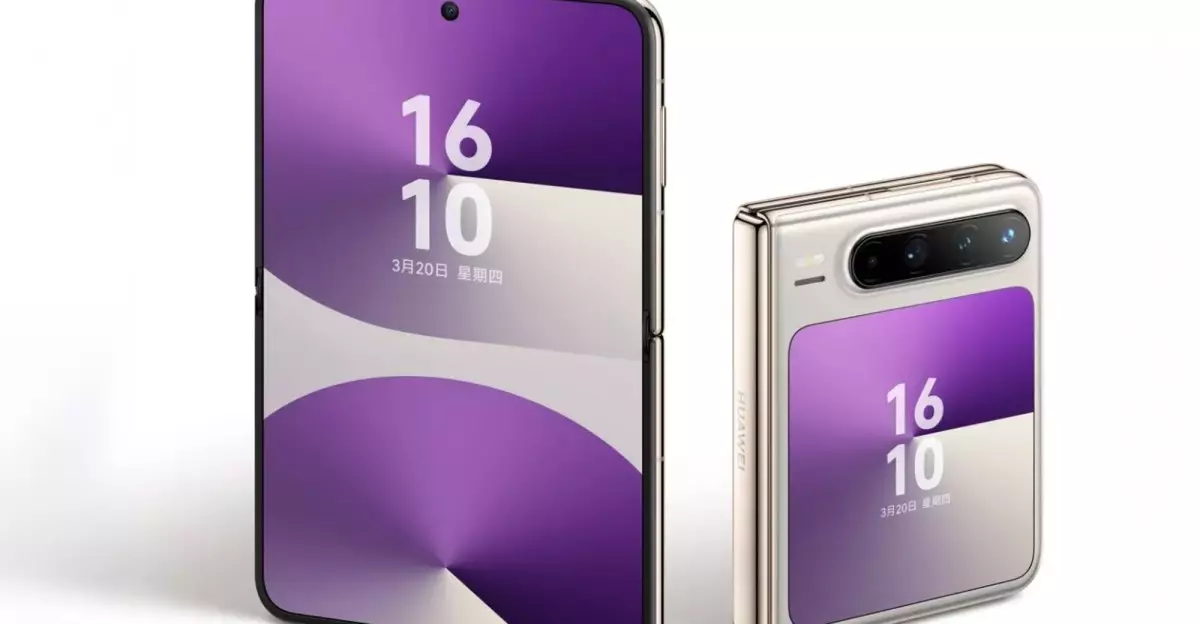Huawei has taken a giant leap forward in the world of mobile technology with the introduction of the Pura X, a device that challenges conventional smartphone design. Unlike typical flip phones that open vertically, the Pura X introduces a groundbreaking sideways flip mechanism, resembling a miniature tablet when opened. This new aspect ratio—16:10—underscores Huawei’s ambition to merge the benefits of traditional smartphones with the expansive displays we usually associate with tablets. By having a wider screen, it invites users to experience multimedia in a more engaging manner, allowing for immersive video watching and enhanced productivity. This bold reimagining of form factors proves that Huawei is not afraid to think outside the box and redefine what a smartphone can be.
Breaking Free from Android Dependencies
What makes the Pura X particularly significant in today’s tech landscape is its departure from Google’s Android ecosystem. This phone exclusively runs on HarmonyOS Next, a system developed entirely by Huawei. By eschewing the Android Open Source Project framework, the Pura X marks a complete break from a dependency that many technology companies have traditionally held, showcasing Huawei’s growing prowess in software development. While this may raise eyebrows for existing Android users concerned about app availability, it poses an interesting challenge for developers to innovate within the Harmony ecosystem. The company aims to galvanize a new user base that is keen on exploring an alternative to the familiar but also restrictive Android environment.
The Harmony Intelligence AI Assistant
At the heart of the Pura X lies Harmony Intelligence, Huawei’s homegrown AI assistant that promises to revolutionize user interaction. Built on the Pangu model and enhanced by DeepSeek algorithms, this assistant sets itself apart by offering a personalized and adaptive experience. As the competition heats up in the AI space, Huawei is carving out its niche, gaining recognition even from tech giants. Nvidia CEO Jensen Huang’s acknowledgment of Huawei’s increasing influence in the AI domain serves as an affirmation of its strides in this field. This new AI integration aims not just to assist but to understand user behavior and preferences, tailoring its functions to better serve individual needs. Harmony Intelligence could become a game-changer in optimizing user experience, making interactions smoother and more intuitive.
Market Positioning and Future Prospects
Currently available exclusively in China, the Pura X is priced at 7,499 yuan (approximately $1,037), targeting a market that values innovation and cutting-edge technology. Given the ever-competitive smartphone landscape, it remains to be seen how the Pura X will perform against established flagship devices that operate within the Android ecosystem. The rising interest in unique design features and advanced AI capabilities may help Huawei build a loyal fanbase. Furthermore, as technology trends lean towards smarter devices being integrated into daily life, the Pura X could well be a precursor to what we can expect in smart technology across various domains.
Looking Ahead: The Road to Rollable Devices
The excitement surrounding the Pura X is reminiscent of the buzz surrounding foldable devices a few years ago. Early teasers hinted that this phone might even pave the way for Huawei’s entrance into the rollable phone market—although that remains speculation for now. While Lenovo is set to launch rollable laptops, the smartphone revolution is yet to see its equivalent. If Huawei successfully implements rollable technology, it could once again redefine user experiences and expectations in mobile devices, emphasizing flexibility and adaptability.
In a rapidly evolving technological landscape, the Pura X stands as a beacon of innovation, challenging norms and encouraging a dialogue about the future of mobile devices. Whether it proves to be a pivotal player in the smartphone saga will depend on user reception and the evolving competitive landscape. However, one thing is clear: Huawei’s commitment to pushing boundaries has set a benchmark for what modern smartphones can aspire to be.

